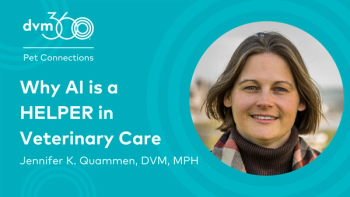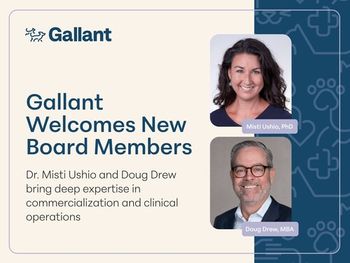
Case Study: Laparascopy and thoracoscopy equal better pet care and happy patients
Using a laparoscopic technique to perform ovariohysterectomy, cryptorchidectomy, and exploratory laparotomy with abdominal biopsy, and using thoracoscopy to perform thoracic exploratory means less pain and quicker recovery time for patients. And for Dr. Rex Bailey, owner of Michigan City Animal Hospital in Michigan City, Ind., laparoscopic services mean better pet care, happier clients, more rewarding work for himself, and good news for his business.
Using a laparoscopic technique to perform ovariohysterectomy, cryptorchidectomy, and exploratory laparotomy with abdominal biopsy, and using thoracoscopy to perform thoracic exploratory means less pain and quicker recovery time for patients. And for Dr. Rex Bailey, owner of Michigan City Animal Hospital in Michigan City, Ind., laparoscopic services mean better pet care, happier clients, more rewarding work for himself, and good news for his business.
"The challenge of learning a new technique is very rewarding," says Dr. Bailey. "And staff members are enthusiastic, too, about offering something so beneficial to pets. The learning curve isn't very steep, and it's easy to get ongoing training to perfect my technique."
Doctors in the clinic have had about 24 hours of training, while Dr. Bailey has received even more. And the knowledge is spreading: The hospital recently hosted a daylong seminar to introduce fellow veterinarians to laparoscopy. "Most doctors were really enthusiastic and went home feeling like this was something they could implement within their own practices," Dr. Bailey says.
Dr. Bailey spent about $35,000 to buy the equipment and gain his initial training in laparoscopy, which he's been doing for about six months. He anticipates performing one or two procedures a week with this technique, earning an additional $180 to $220 surgery fee per procedure.
Typically Dr. Bailey completes the procedures himself without the aid of an assistant surgeon, though when an assistant is required, there's never a shortage of interested parties. "Most procedures are completed within a similar time frame as traditional surgical techniques, but exploratories are quicker. And we feel we get a better view of organs, especially the liver and posterior abdomen," he says.
To educate clients about his new service, Dr. Bailey is sending out newsletters, discussing the benefits of laparoscopic spays during puppy visits, and posting write-ups on his practice Web site. He also hopes in his spare time to write an article for the local newspaper.
"I believe laparoscopy is going to be the wave of the future for veterinary medicine in the next five to 10 years," he says. "Most people have had or know someone who's had laparoscopy, and as more people have the same healthcare expectations for their pets as they have for themselves, we'll see an increased interest within the veterinary field."
If you have any questions or comments, e-mail us at ve@advanstar.com.
LETTERS
At Bienville Animal Medical Center, we take a parallel approach to the one Dr. Brad Rosonke uses to handle his dental caseload ("Visiting Specialist Wins Clients, Revenue, and Time," April 2005). We're at least three hours away from a veterinary school, and referral dental services are usually not available. However, like most busy practices, we often need assistance in endodontics, orthodontics, and involved oral medicine and surgery cases.
Our solution: We use my brother, Dr. Andrew Duke, a Fellow of the Academy of Veterinary Dentistry. Every other Thursday he commutes from Mobile, Ala. (50 miles away) to have a dental clinic at our hospital. He sees cases from our practice as well as referrals from the area. Each clinic day he sees about five cases, such as root canals, mucoperiosteal flaps, surgical extractions, and restorative procedures. He brings a digital radiography system and laptop computer and stores the radiographs and images of these cases for his own records, referral letters, and presentations.
We're able to better serve clients' needs, and our patients receive high-quality dental work. Income for the practice is generated by procedures we would not otherwise be doing. So far, it's been a win-win situation for all of us.
Dr. Chris Duke
Ocean Springs, Miss.
Auburn University '83
SEND US YOUR IDEAS!
Do you have an idea that helped boost practice profitability? We'd like to hear about your approach! Send your growth strategies to ve@advanstar.com with Growth Bulletin in the subject line. We'll pay $40 for any submitted growth idea we use.
I SURVIVED!
Have you weathered a tough experience and survived, even thrived? Do you have lessons learned that you'd like to share? We'd like to hear about your experience. Get in touch by e-mailing us at ve@advanstar.com with I Survived in the subject line.
Newsletter
From exam room tips to practice management insights, get trusted veterinary news delivered straight to your inbox—subscribe to dvm360.






